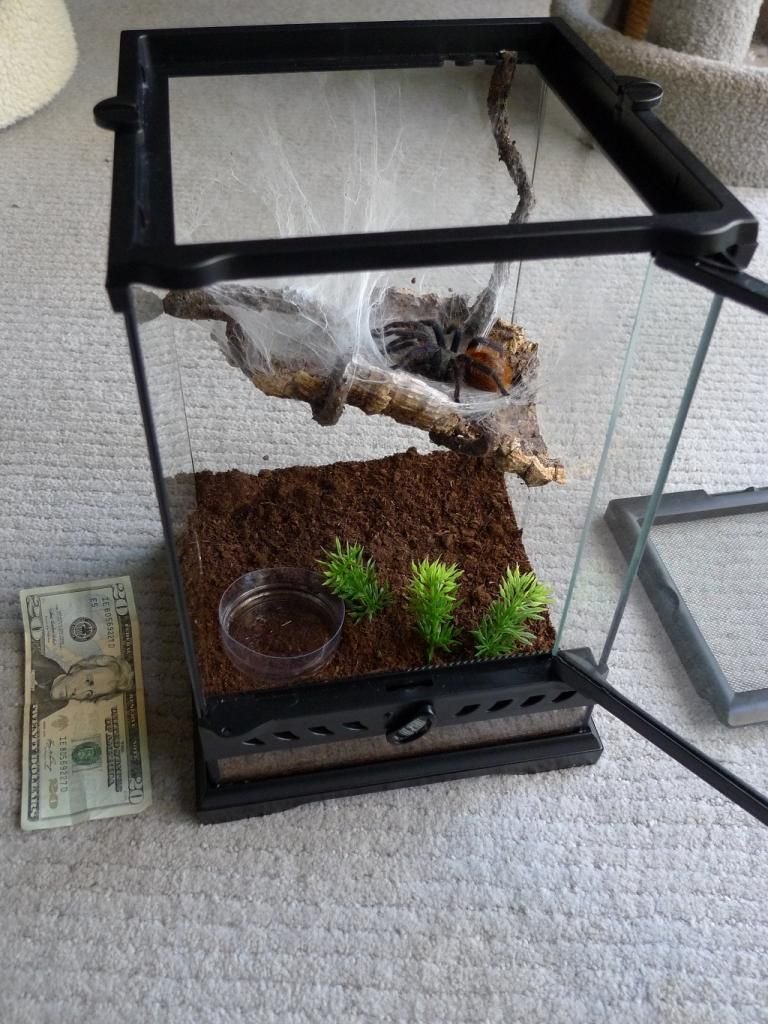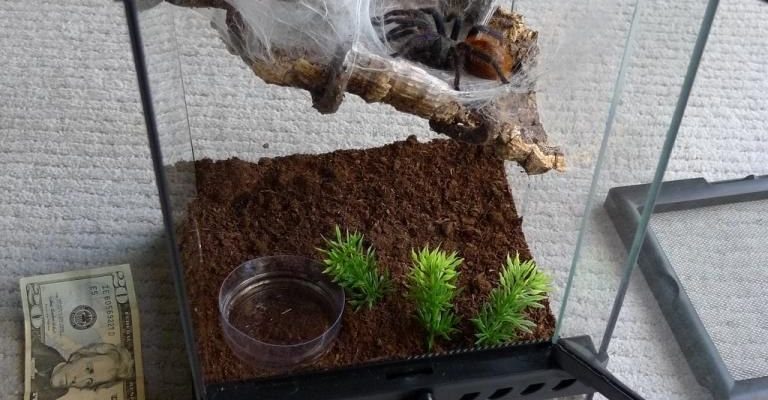
Choosing the right terrarium setup is like picking the perfect home for a new pet. Imagine you’re moving into a new place and you want it to feel cozy, safe, and just the right temperature. Your Greenbottle Blue Tarantula needs the same care! Let’s dive into what makes the best terrarium setup for these fascinating creatures so you can create a perfect haven for them to flourish.
Understanding the Greenbottle Blue Tarantula
Before you start planning your terrarium, it’s important to know a bit about the Greenbottle Blue Tarantula. Native to the rainforests of Venezuela, these tarantulas are known for their striking blue and yellow coloration, making them visually stunning pets. They’re also known as Ceratogyrus meridionalis and are a part of the tarantula family that enjoys both arboreal and terrestrial environments.
These tarantulas can grow up to 5 inches in leg span, and their behavior is fascinating to observe. They’re primarily ground-dwellers but appreciate a bit of vertical space in their setup. That means you’ll want to include both floor and climbing areas in their home. Understanding their natural habitat can give you insights into how to recreate a similar environment that will keep your pet content and healthy.
Choosing the Right Terrarium Size
When it comes to selecting a terrarium for your Greenbottle Blue Tarantula, size does matter. Ideally, you should be looking for a terrarium that’s at least 10 gallons. This size provides enough room for your tarantula to roam and explore. Remember, these spiders need space to stretch their legs and build their webs, so a too-small enclosure might stress them out.
A taller terrarium can also be beneficial, as it allows for vertical climbing options. Look for an enclosure that has a secure lid; these spiders are known for their surprising strength and agility. You wouldn’t want your beautiful tarantula escaping! A glass or plastic terrarium with good ventilation is perfect for keeping the humidity levels just right, which is critical for their well-being.
Heating and Humidity Requirements
Temperature and humidity are crucial elements in creating a suitable habitat for your tarantula. The ideal temperature range for a Greenbottle Blue Tarantula is between 75°F to 85°F (about 24°C to 29°C). You can achieve this by using a low-wattage heat mat placed on one side of the terrarium. This setup allows for a gradient where your spider can choose the temperature they prefer.
Humidity is another important factor, and for these tarantulas, you want to aim for around 60% to 70% humidity. To maintain this level, you can use a hygrometer to monitor moisture levels. Spraying the substrate lightly with water a few times a week will help, but be cautious not to soak it—it’s all about finding that balance. Too much moisture can lead to mold and mites, while too little can cause dehydration.
Creating the Perfect Substrate
The type of substrate you choose is vital for your tarantula’s environment. A mixture of coconut fiber, peat moss, or topsoil works well. You’ll want to create a substrate layer that’s about 3 to 4 inches deep. This depth allows your tarantula to burrow if they choose, which is a natural behavior for them.
Here’s the trick: make sure the substrate retains some moisture without becoming soggy. You can also mix in some leaf litter or small pieces of bark to mimic their natural habitat. Not only does this add visual interest to the terrarium, but it also helps maintain humidity levels. Remember, the goal here is to recreate a tiny slice of their natural world.
Decorating the Terrarium
Now we get to the fun part—decorating the terrarium! Adding hides and climbing structures not only makes the enclosure more attractive but also provides your tarantula with crucial hiding spots. You can use small caves, pieces of driftwood, or even artificial plants. Just ensure that everything is secure and won’t tip over easily.
It’s also a good idea to include something like a small water dish. This can be as simple as a shallow dish or a bottle cap filled with fresh water. Refresh the water regularly to keep it clean. Just be mindful; if the dish is too deep, your spider could drown, so go for shallow options.
Feeding Your Greenbottle Blue Tarantula
Feeding your Greenbottle Blue Tarantula is straightforward, but it’s essential to know their dietary needs. These tarantulas are carnivorous, so they’ll thrive on a diet of appropriately sized live insects, like crickets, mealworms, or roaches. Depending on their size, you might want to feed them insects that are about the size of their body or smaller.
It’s best to feed them about 2-3 times a week, but this can vary based on their age and size. Always ensure that any uneaten prey is removed after a couple of hours to prevent stress or health issues. You might be wondering how to tell if your tarantula is hungry. Just keep an eye on their behavior; if they’re active and exploring, it might be a good time for a meal!
Common Issues and Troubleshooting
Even with the best care, you might face some challenges while keeping a Greenbottle Blue Tarantula. One common problem is stress, which can show itself through aggression or hiding more than usual. Ensure that their environment is quiet and that they don’t feel threatened.
Another issue could be related to humidity levels. If you notice your tarantula is lethargic or has difficulty shedding, this might be a sign that the air is too dry. Adjust your watering routine accordingly. Remember, just like us, these creatures thrive best in environments that mimic their natural habitats, so always keep a close eye on their setup.
Setting up the best terrarium for your Greenbottle Blue Tarantula doesn’t have to be overwhelming. With a bit of understanding and care, you can create a beautiful and comfortable home for your new eight-legged friend. Remember to keep an eye on temperatures, humidity, and their feed, as these are crucial elements of their care.
In the end, your Greenbottle Blue Tarantula will thank you for the thoughtful setup with their vibrant colors and active behavior. Enjoy the process of setting up their home, and take the time to observe and appreciate their unique personalities. Creating a little world for your spider can be one of the most rewarding experiences as a pet owner!

